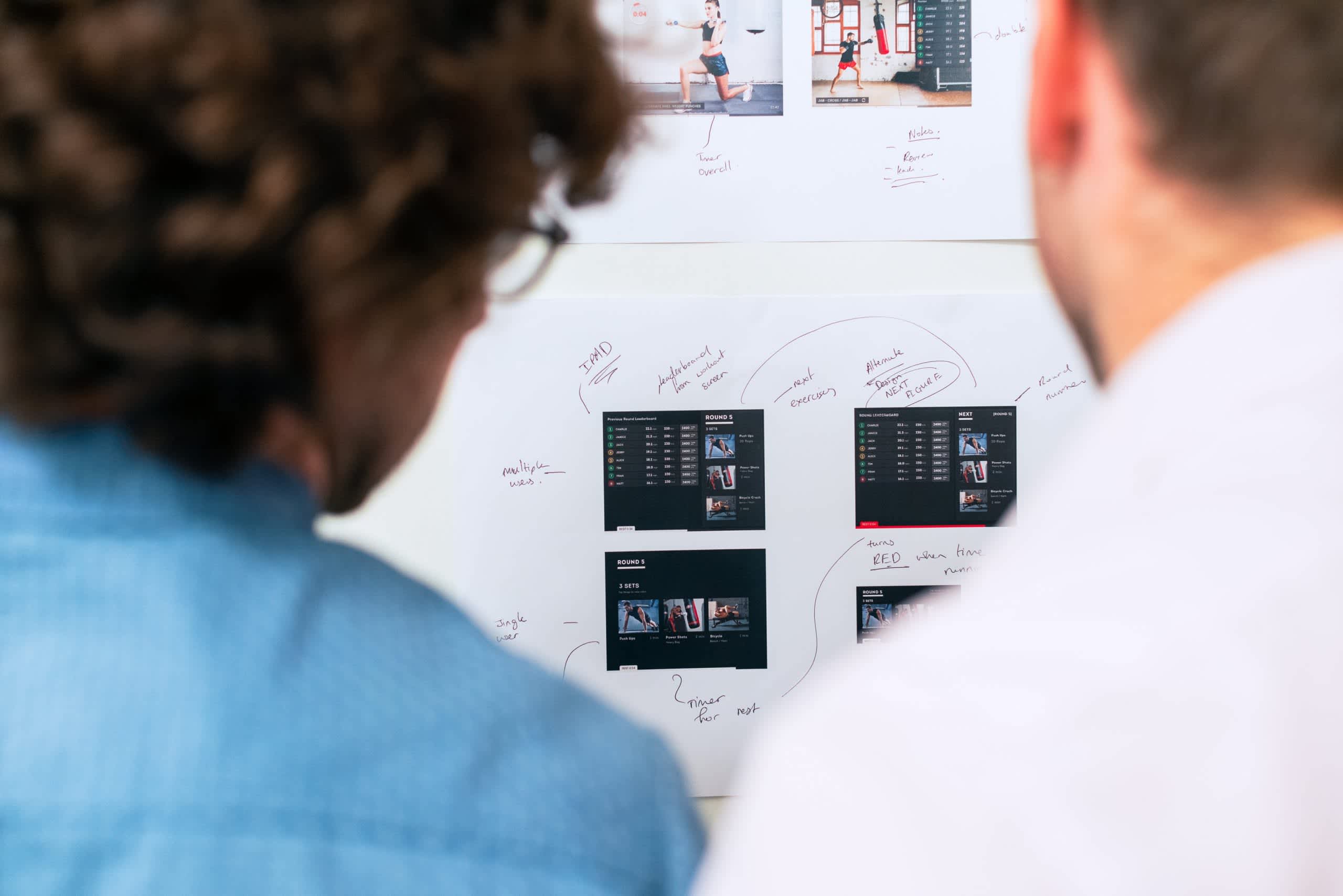When organizations begin developing a digital product, the primary goal is often to ensure the finished product meets the end-user's needs and can be improved over time. While the purpose of these development projects may be clear enough to the organization at their inception and throughout the software development lifecycle, there are various paths organizations can follow when trying to execute them effectively.
When considering how a project can be effectively executed, organizations often hear the terms "Design Thinking" or "Design Sprints" concerning taking a concept or idea and turning it into a tangible product. But how do these terms compare with another? Are they the same idea, or is one a more effective process when bringing your digital product to life?
Below we'll define the different terminologies when referring to product design & development lifecycles, including how they differ, how they're alike, and when each should be applied.
Design Thinking vs. Design Sprint
While the terms "Design Thinking" and "Design Sprint" are both closely aligned with the conceptualization and execution of an innovative product, they are separate elements of the process and used in different contexts.
What is Design Thinking?
Design Thinking is a methodology that can be applied when developing products that focus on innovation while continuously keeping the user experience at the forefront of development priorities. This is done by identifying any user pain points and using creative problem solving to help you draft a sustainable framework for successful development.
What are Design Sprints?
A Design Sprint is a formulaic approach to compressing the Design Thinking process into a 5-day execution. Design Sprints are used to verify ideas or features while creating a tangible prototype within a short amount of time. A Design Sprint encourages cross-departmental collaboration and focuses while also catering to open-minded thinking, creative problem solving, and increased accountability.
How is Design Thinking Used?
Design thinking is highly effective when searching for innovation or adjusting solutions to the users' needs. It should be used to simplify different prioritization techniques. The design thinking can be applied by keeping to a 5-phase process created by the Stanford d.school:
Phase 1: Empathize
The first phase of the Design Thinking process is Empathize. This phase is all about getting a better understanding of the users and is done in various ways. This can include:
Interviewing current or prospective customers
Gaining insights from subject matter experts
Workshops with other designers familiar with the project needs.
Phase 2: Define
The second phase of the Design Thinking process is Define. Once the appropriate information has been collected during the first phase, you can define and synthesize all the information collected. At this point, you'll want to document each of the significant challenges that users face and how to choose the top ones you want to solve.
Phase 3: Ideate
The third phase of the Design Thinking process is Ideate. In this phase, the participants will want to think of broad ways to address the challenges identified in the second phase. This is a highly creative phase in which the participants brainstorm ways to tackle user issues by thinking outside the box and sharing their ideas on addressing the crucial problems.
Phase 4: Prototype
The fourth phase of the Design Thinking process is Prototype. While prototypes can be in many different formats, in digital product development, it often comes in the form of a functional mockup with basic features that showcase the capabilities of the software. During this phase, the goal is to create a simulation of the final product while presenting a platform that can be used to collect relevant feedback for the final development and future improvements.
Phase 5: Test
The fifth and final phase of the Design Thinking process is Test. Once the Prototype has been developed, it's ready to be tested with a focus group of users to get their unbiased viewpoints and reactions to the product. The testing phase is typically an iterative process and is used to inform a series of ongoing changes and edits.
How are Design Sprints Used?

Design Sprints let development teams verify an idea and test while gathering feedback on a rough prototype in record time, allowing you to weigh user reactions before making expensive commitments in lengthy development projects.
Design Sprints are derived from the Design Thinking process and provide a battle-tested, revolutionary framework for effective feature testing of development projects. This framework is built on a 5-day format and helps to reduce the risk when bringing products or services to the market.
Here is how the framework looks:
Day 1: Understand
On day 1 of a Design Sprint, development teams review the scope of the project and identify all relevant goals.
Day 2: Sketch:
On day 2 of a Design Sprint, teams get together to brainstorm new ideas and start developing priorities for how to sketch solutions to problems discovered.
Day 3: Decide:
On day 3 of a Design Sprint, teams review all sketched ideas and solutions and agree on which ones should be storyboarded and moved to the prototype stage.
Day 4: Prototype
On day 4 of a Design Sprint, development teams decide on what should be built to gain the right level of feedback for the project's future success. This is an accelerated prototype based on your storyboard and isn't designed to be perfect. The primary goal is that it is visible and functional enough to test with your users.
Day 5: Test
On the last day of a Design Sprint, a functional prototype is used for testing with a small test group. TThis is typically no more than five individuals, one-on-one, who are then interviewed to give the development team a general feel of whether or not the product meets the needs of the user.
In Summary
Both Design Thinking and Design Sprints are essential elements for designing successful products on time. While Design Thinking is the methodology and foundation needed to understand the needs of a project and the end-user, Design Sprints provide an effective framework for solving the challenges by designing and testing the right solutions.

Greg Cargopoulos
Marketing Lead

